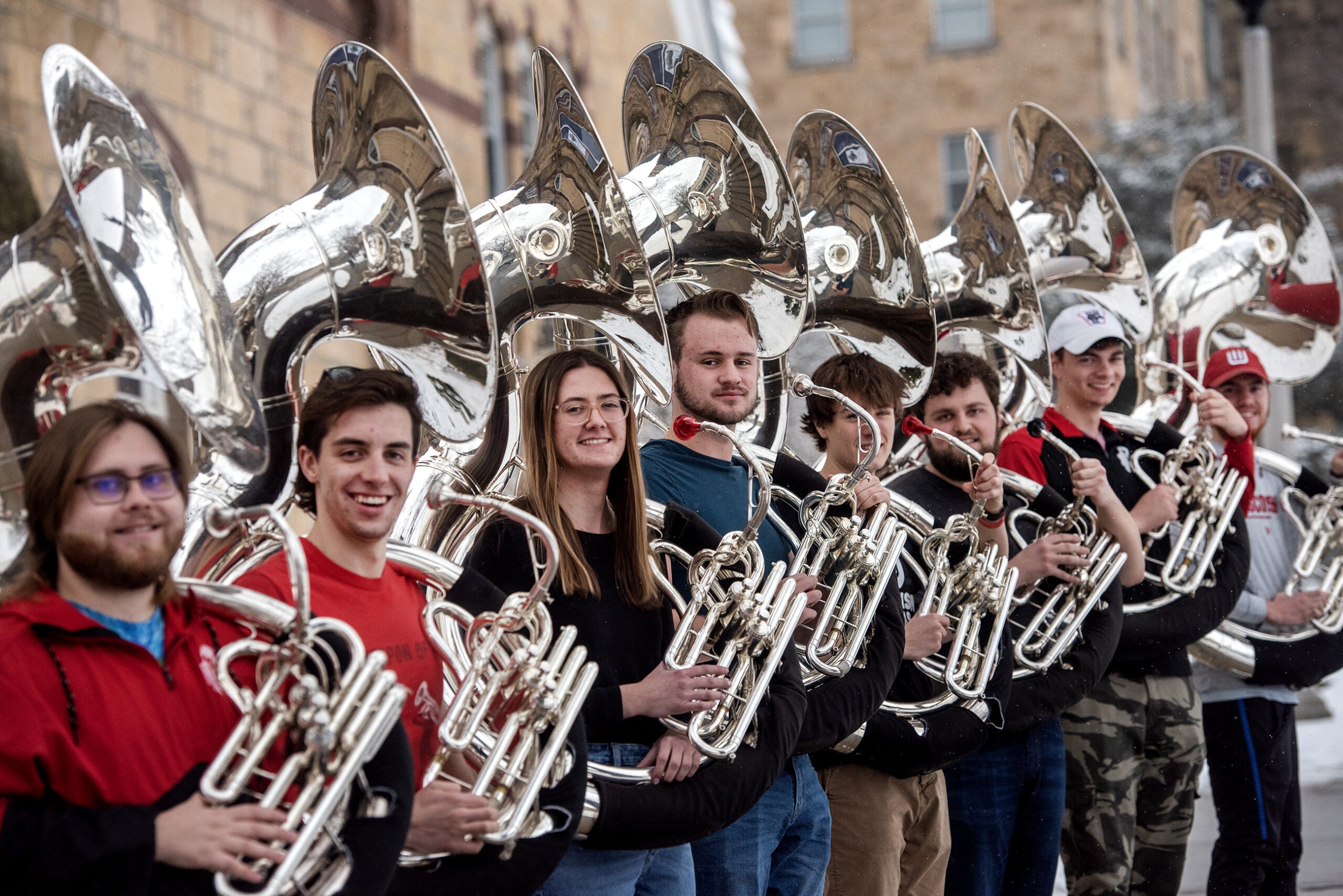It feels like everyone’s dad in Wisconsin plays the tuba. That was Elizabeth Renner’s impression after she moved to Madison from Chicago a year ago.
Her other thought was that people are still very much into polka music.
“Shouldn’t that have died out decades ago?” she said.
Stay informed on the latest news
Sign up for WPR’s email newsletter.
Renner asked several people about tubas and polka, and what she found out made her laugh.
“It’s funny to me, everyone knows someone who plays tuba,” Renner said.
Mike Forbes, a Wisconsin-based musician and educator, said the “everyone’s dad” approximation is pretty close to accurate.
“I teach about 20 students, here in the Madison area, private lessons, and about half of those are kids whose dad played the tuba,” he told Wisconsin Public Radio’s “Central Time.”
Forbes teaches low brass at the University of Wisconsin-La Crosse. He also plays principal tuba with the La Crosse, Beloit-Janesville, and Manitowoc symphonies, and he leads the Isthmus Brass, Wisconsin’s premier large brass ensemble.
“Anytime I go out and do a little clinic for kindergartners … all these hands shoot up. ‘Oh, my dad plays that!’ And then I say, ‘Oh yeah, what’s it called?’ And they say, ‘It’s a trumpet!’ I’m like ‘No.’ So there is some confusion sometimes.”
For Renner, she isn’t confused, she’s just curious. She reached out to WPR’s WHYsconsin with the questions: “Why are tubas such a prominent part of the UW-Madison band? And why are they so popular in the state of Wisconsin?”
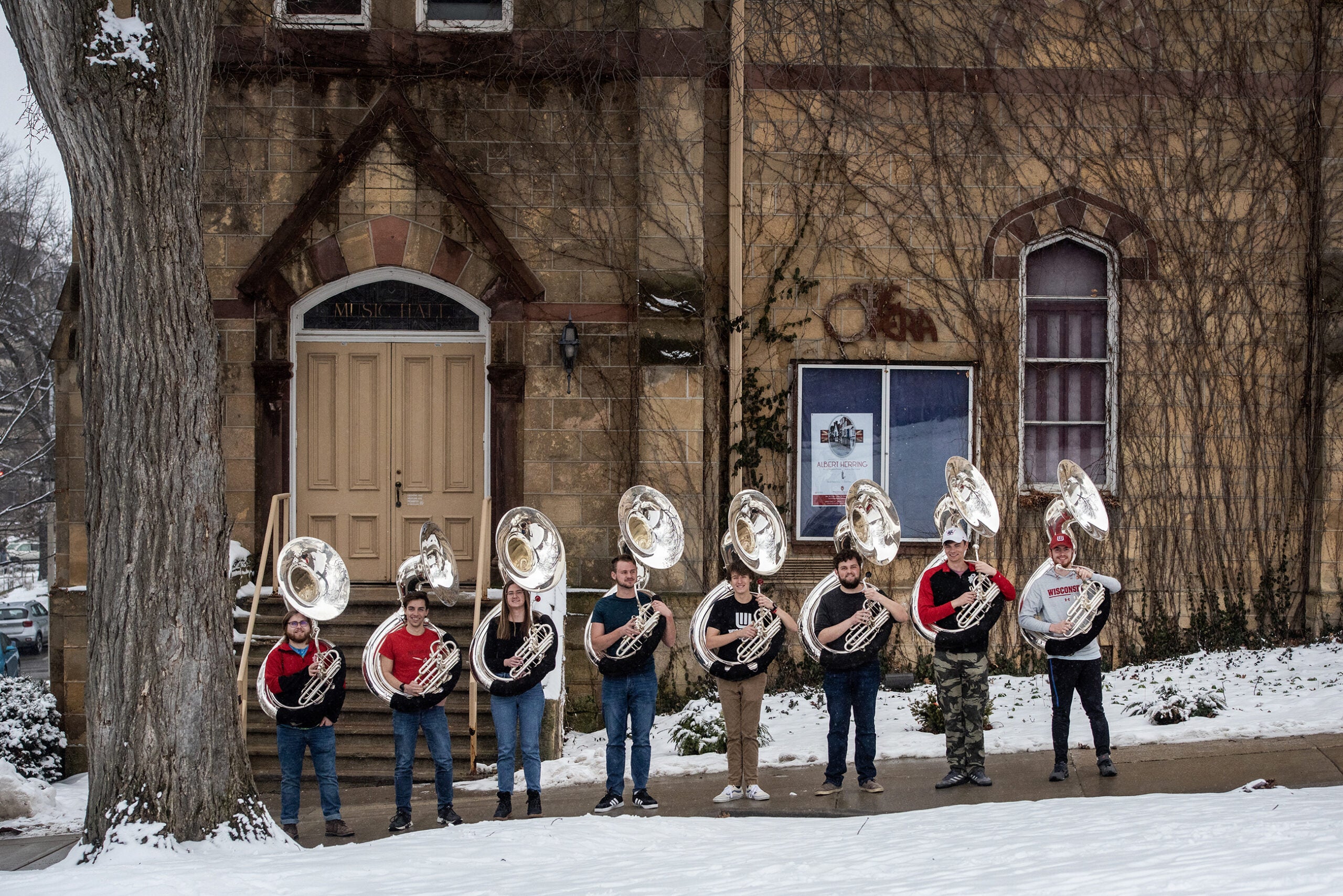
Polka-round the tuba’s history
Let us take a beat and answer Renner’s second question first.
For John Stevens, the tuba’s popularity in Wisconsin goes all the way back to the Civil War band tradition that he says has carried on all these years later. Stevens is a longtime tuba performer and composer in Wisconsin and professor emeritus of music at UW-Madison. The Brodhead, Wisconsin Brass Band was one of the more well known bands of that era, he said.
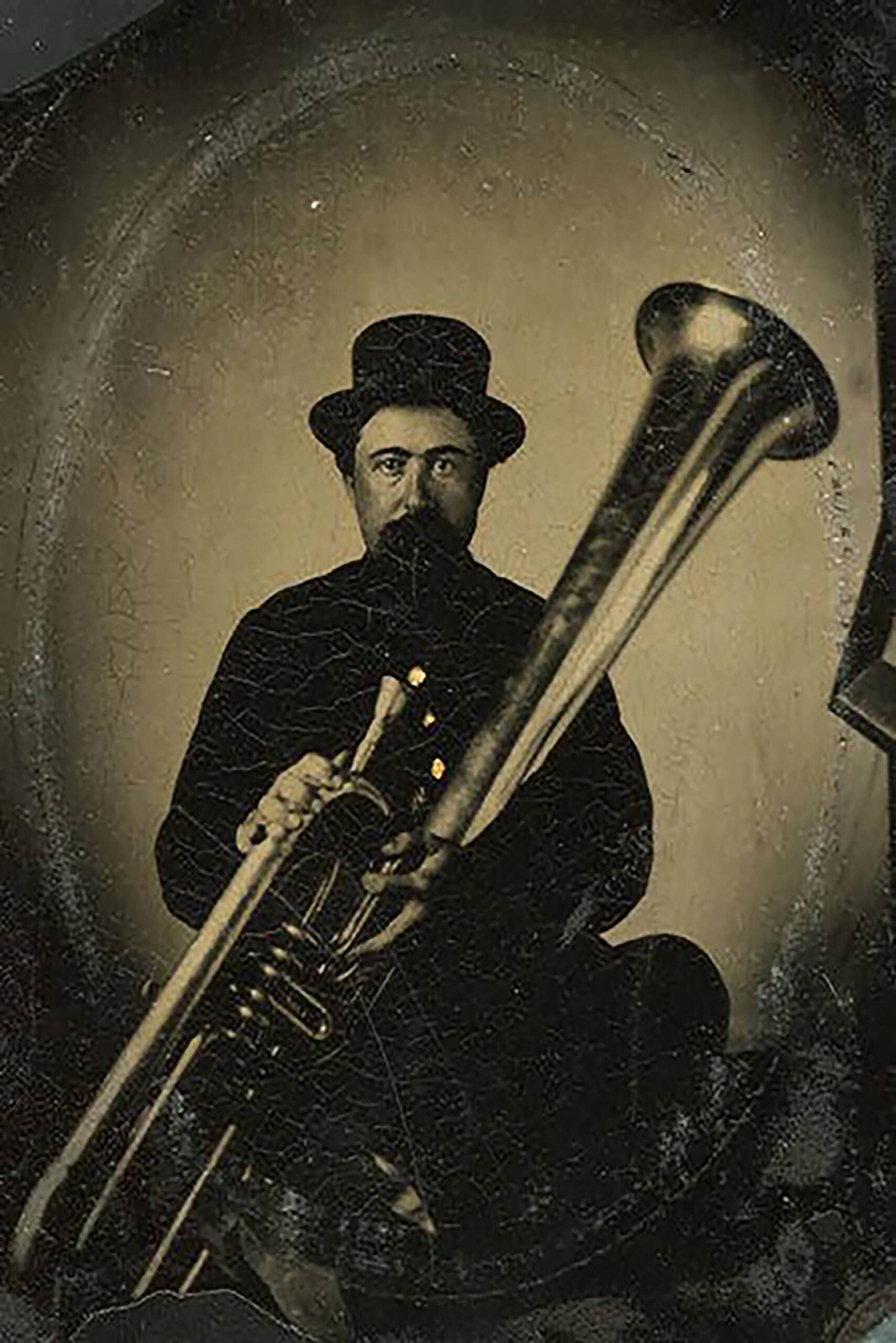
About a decade before and after the war, there were also periods of significant German immigration to Wisconsin, according to the Wisconsin Historical Society. As Stevens told WPR’s “Central Time,” “there is sort of a squiggly line” connecting the popularity of military bands and German immigrant community bands in the state. By 1950, according to the historical society, people with German heritage dominated more than half of Wisconsin counties, and local breweries and bands from that culture became part of the state’s culture.
“Polka bands, bands and beer, if you will,” said Stevens, “the musical influences from the German culture have been a big part of that.”
Forbes said towns across Wisconsin still have their own unique community bands or orchestras.
“I think a lot of the orchestras I play with kind of grew out of what was a community orchestra and then has become more of a professional orchestra, say, for example, the ones in La Crosse and Manitowoc,” he said.
But what is it about tubas in particular that make them popular in Wisconsin?
“I think the tuba is the largest, shiniest, most obvious visual instrument in any polka band, I think that actually has a lot to do with the popularity,” Stevens said. “I might make the analogy to the elephants at the zoo.”
But the tuba is just as ear-catching as it is visually striking. The sound of the tuba’s bassline in a polka is unmistakable.
“It’s playing something that is going on every second of every piece,” Stevens said. “People sing the melodies. But we all sort of feel this bassline when we’re listening to a polka band, or a rock band, or any kind of band. And the association with the tuba or the sousaphone or both really resonates, literally inside of people.”
Is it a tuba, or a sousaphone?
While we’re answering some tuba questions, Forbes would like to clear up some nomenclature.
“The tuba is a little different looking than a sousaphone,” he said. “The tuba kind of sits on your lap and the bell points upward, whereas the sousaphone wraps around your body and you have the gigantic bell facing right out at the audience.”
So, sousaphones — or sousas for short — are engineered for marching. Tubas are more for a concert setting. That being said, the sousaphones in the University of Wisconsin Band are popularly referred to as “tubas.”
Squashing the melody
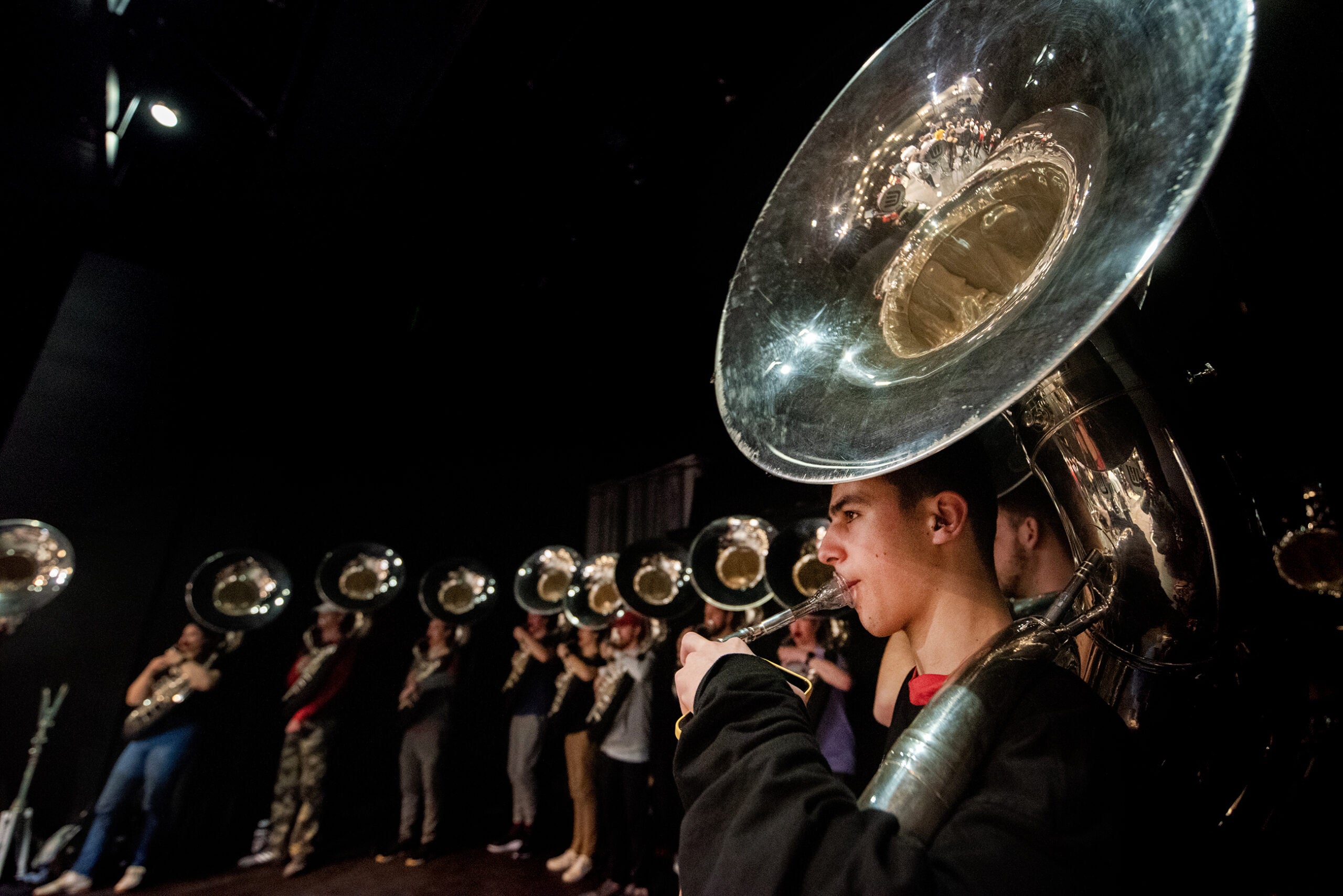
Renner also wanted to know about the prominence of the University of Wisconsin Marching Band’s tuba section. Her high school band had a mere half dozen, if that, tuba players. The UW Marching Band typically fields around two dozen, give or take.
And when they take the field on game days, there’s a sudden visual and visceral impact.
“We’re so big, you can see the bell from anywhere in the stadium,” said UW tuba player Joseph Klug, a senior from West Bend. “The other instruments, they have hats with massive plumes, you can tell when they’re looking around. For us, you can clearly tell if we’re facing the wrong way.”
And sonically, as with polka, this band’s music needs the tuba section as its foundation, said Corey Pompey, UW Marching Band director and associate director of bands at UW-Madison.
“When we talk about the roots of the chords, we’re talking about basslines,” Corey said. “If we’re playing jazz, or if we’re playing some more contemporary music, for that matter, the bass is important — and rock music, too. It’s just an important sound, an important voice in the band, that we just have to have.”
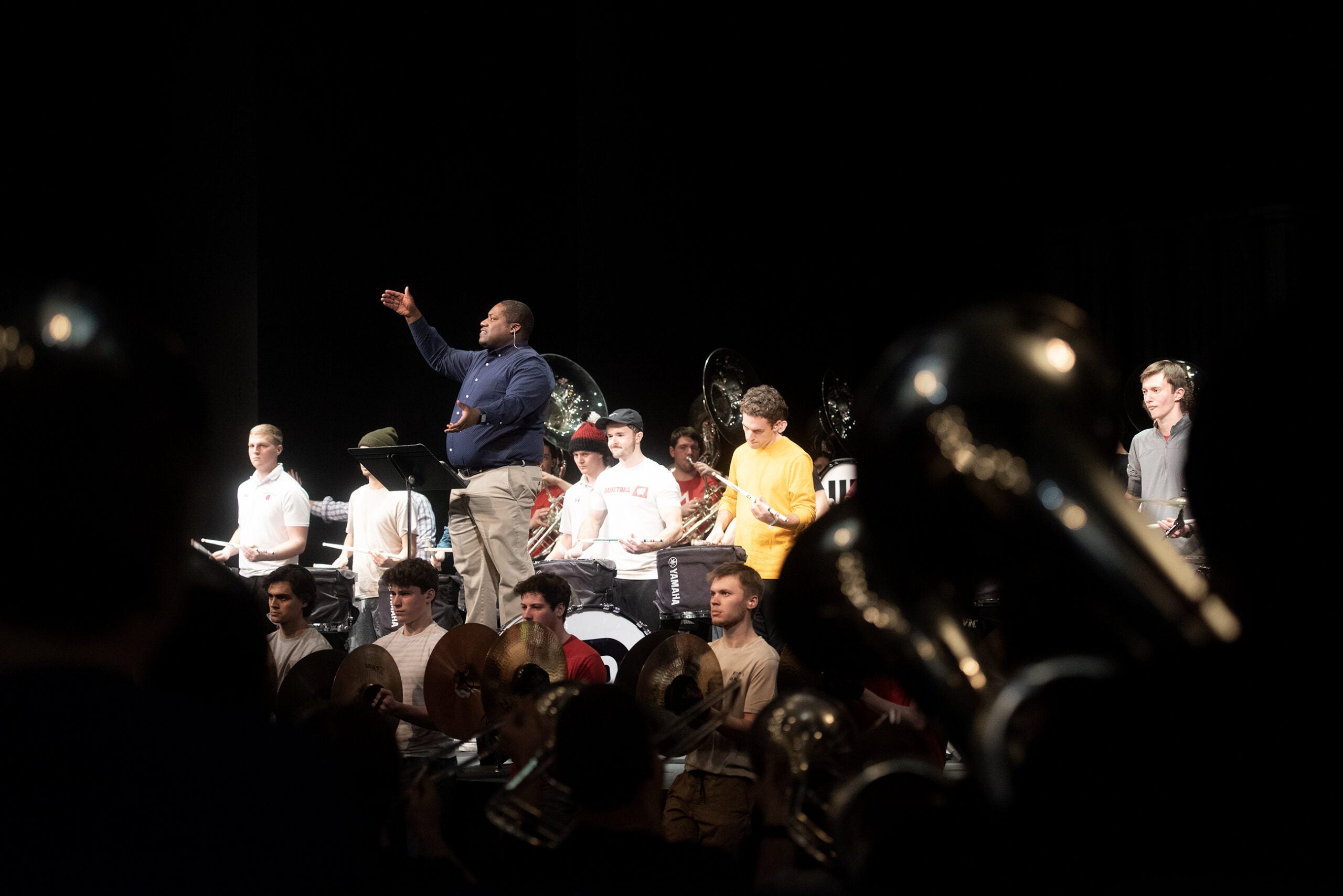
This section also likes to have fun. And when you have two dozen massive instruments doing fun things, that gets people’s attention.
A tradition going back to the 1950s, UW’s tuba section famously ushers in the second half or fourth quarter of Badger football games by setting out on a “Tuba March,” where they form a line and plod around the perimeter of the field. John Stevens attributes this and other traditions, formed and evolved by previous band directors Ray Dvorak and Mike Leckrone.
During the march, the tubas enjoy a rare opportunity to actually play the melody of songs including “On, Wisconsin!,” “Beer Barrel Polka,” and “You Said It All.”
“It’s the best,” said UW Marching Band tuba player Gabe Koepke, a senior from Pulaski. “It’s not that I don’t like the music we play with the regular band. But you do get kind of sick playing just the bass note all the time. So when we’re going around and playing the melody for people, it makes you feel like a star. It’s awesome.”
There’s a big payoff for listeners too: The entertaining novelty of hearing a song flipped on its head.
“When you hear it — a bassline instrument all of a sudden gets their hands on a melody and just squash it… you know, that’s a lot of fun to listen to from an audience perspective,” Forbes said.
It’s “special” when those bass voices run with the melody, Pompey said.
“Sometimes they can be comical, because you’ve got this deep sound playing with a certain amount of agility, if you will,” Pompey said. “And so, once they get it down, I enjoy it a lot.”
On game days, these flashy Badger behemoths can also be seen parading on their own around Madison, making stops on Regent Street. They’re allowed to break standard band protocol for in-uniform behavior and interact a bit more with opposing fans.
Other tuba antics include members of the section building a human pyramid during the game. Koepke admits the section members do a lot to make themselves very prominent, in addition to the fact that the instruments are simply big and funny-looking.
“If you watch us, you can tell we have fun,” Koepke said. “That really at its core is why people love the tuba section. It’s a lot of fun to play tuba, and a lot of fun to watch people play tuba.”
The next opportunity Wisconsinites will have to see the famed, fun-loving tuba section in action will be their feature at the annual Varsity Band Spring Concert on April 21 and 22.
Tuba playlist
Stephanie Elkins, host and producer of WPR’s “Morning Classics,” created a playlist of iconic tuba music.
Selections include the Wisconsin-based tuba quartet Chromos playing arrangements and compositions by John Stevens; all three movements of the “Tuba Concerto” by Ralph Vaughan Williams; the UW Marching Band playing “On Wisconsin;” and Sotto Voce, a low brass ensemble, playing a John Stevens composition.
This story was inspired by a question shared with WHYsconsin. Submit your question below or at wpr.org/WHYsconsin and we might answer it.
